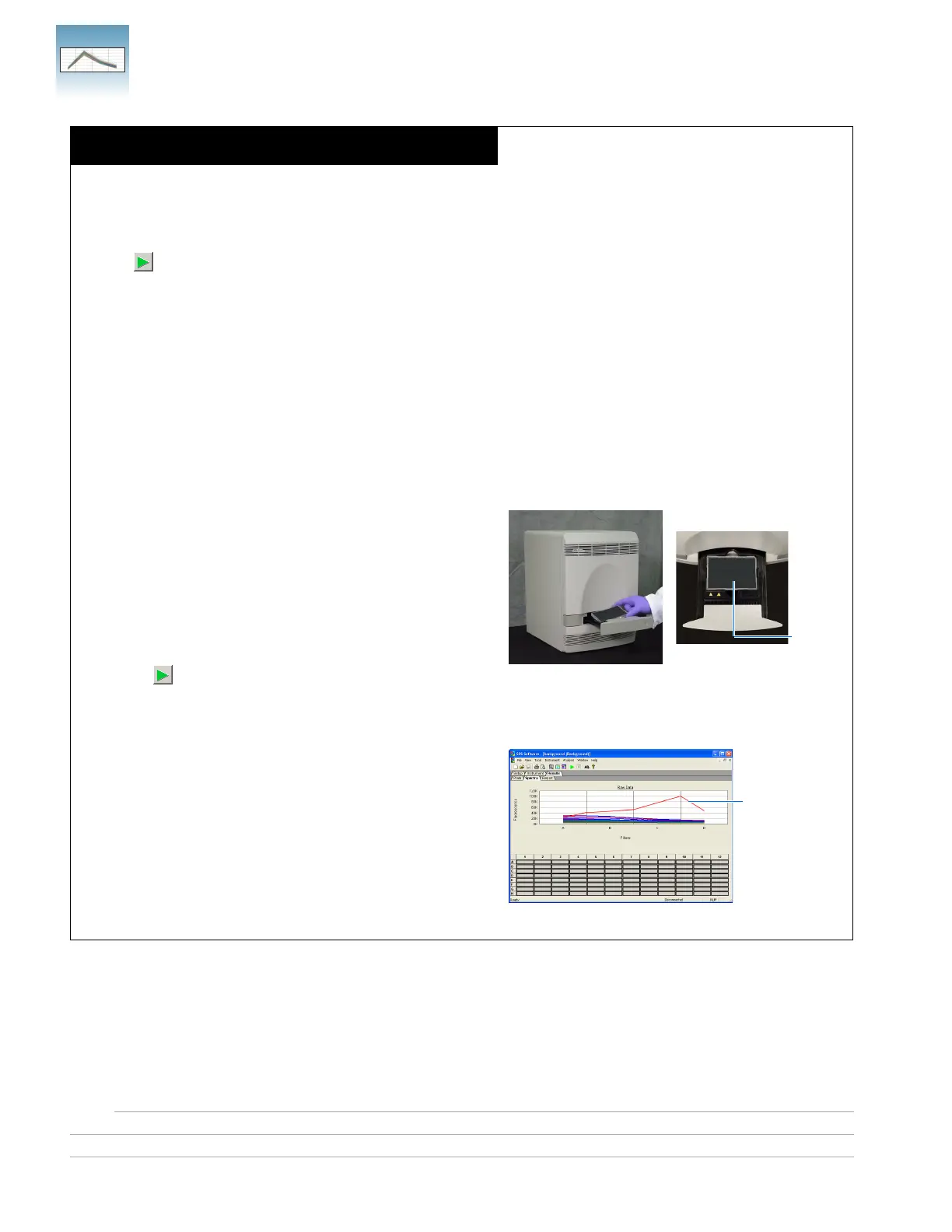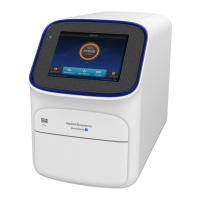Chapter 5 Performing the Background Calibration and Optical Calibration
Troubleshooting
66 Applied Biosystems 7300/7500/7500 Fast Real-Time PCR System Installation and Maintenance Guide
Notes
6. Create a new background plate (see Appendix B, “Creating a
Background Plate” on page 125.)
7. Perform a background calibration (see “Performing the
Background Calibration” on page 55).
8. Click (or select AnalysisExtract Background).
9. Repeat step 4 on page 65 to examine the contaminated well
position(s).
If the contaminated well positions with the new background
plate are:
– In the same location as you saw in step 4, then the sample
block is contaminated. Decontaminate the sample block
(see “Decontaminating the Sample Block” on page 108).
– No longer present, the original background plate was
contaminated. You can inspect the original background
plate Make sure there is no particulate matter on the bottom
of the plate or on the cover.
10.If the calibration fails after you use a new background plate or
decontaminate the sample block, perform the following test:
a. Press the tray to open it.
b. Load the black plate tool from the packing kit (or a plate
containing a piece of black paper) into the plate holder.
c. Push the tray back into the instrument.
11.Perform a background calibration (see “Performing the
Background Calibration” on page 55).
a. Click (or select AnalysisExtract Background).
b. Select the Results tab, then select the Spectra tab.
c. Select all wells of the plate document.
12.View the Spectral plot for the peak(s) and choose from the
following:
If the contaminated well is:
– Present, then the optics of your 7300/7500/7500
Fast system may be contaminated. Contact
Applied Biosystems technical support or your service
representative for further assistance.
– Absent, then the sample block is contaminated.
Decontaminate the sample block (see “Decontaminating
the Sample Block” on page 108).
Troubleshooting – Background Calibration
Black
plate
Contaminated well
